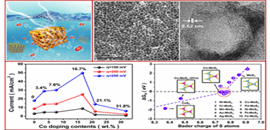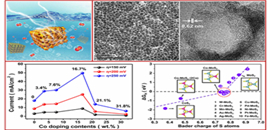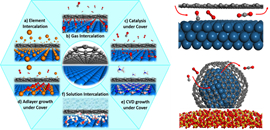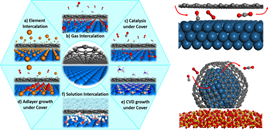Research News
-
05 02, 2017DICP Symposium (XXXXIII) on Bioanalytical Methods, Techniques, and Applications was Successfully Held
The 43rd DICP Symposium on Bioanalytical Methods, Techniques and Applications, chaired by Prof. Guowang Xu and Mingliang Ye, was successfully held on April 25-27, 2017 in Dalian Institute of Chemical Physics (DICP), Chinese Academy of Sciences (CAS). The symposium has two sessions: 1) highly efficient separation and characterization of biological samples, and 2) new generation metabolomics techniques and their applications in precision medicine. The opening ceremony was chaired by Prof. Shengli Yang (member of Chinese Academy of Engineering). Prof. Rui Cai, the deputy director of DICP, made an opening speech and briefly introduced the institute.
More than 60 distinguished scientists were specially invited from abroad and China to report their brand-new research results including analytical method development and applications in the proteomics, metabolomics, life science and other hot fields. These scientists included Prof. Norman Dovichi (University of Notre Dame, U.S.A), Prof. Jeremy Nicholson (Imperial College in London, U. K), Prof. Albert Sickmann (Leibniz Institute of Analytical Science, Germany), Prof. Frantisek Svec (University of California, Berkeley, U.S.A), Prof. Chris X. Le (University of Alberta, Canada), Prof. Yingming Zhao (University of Chicago, U.S.A), Prof. Guibin Jiang (member of Chinese Academy of Sciences, Research Center for Eco-Environmental Sciences, CAS), Prof. Weihong Tan (member of Chinese Academy of Sciences, Hunan University), Prof. Huwei Liu (Peking University), Prof. Maili Liu (Wuhan Institute of Physics and Mathematics, CAS), Prof. Guowang Xu and Prof. Mingliang Ye (DICP, CAS), etc.
This symposium was also dedicated to remember Prof. Hanfa Zou who passed away one year ago. This symposium brought together researchers in the fields of analytical chemistry and life science together to share their latest research and praised Prof. Zou’s great impact and legacy on biological analytical chemistry. In the opening ceremony, Prof. Guowang Xu introduced Prof. Zou’ C.V. and his outstanding academic achievements in the separation science and bioanalytical chemistry. In addition, there was a youth forum held at the beginning of this symposium, and more than 30 students of Prof. Zou attended the meeting, they shared with many details of life and work about Prof. Hanfa Zou. Prof. Mingliang Ye introduced the status of DICP 1809 group for the post Zou era and the related memorial events this group organized.
This symposium not only reported the latest scientific research results in the field of international analytical chemistry, but also showed the academic levels of our institute. It is also helpful to promote the cooperation with famous scientists at home and abroad. (Text: Hongqiang Qin, Photo: Wansheng Liu).
-
05 02, 2017DICP Symposium (XXXXIII) on Bioanalytical Methods, Techniques, and Applications was Successfully Held
The 43rd DICP Symposium on Bioanalytical Methods, Techniques and Applications, chaired by Prof. Guowang Xu and Mingliang Ye, was successfully held on April 25-27, 2017 in Dalian Institute of Chemical Physics (DICP), Chinese Academy of Sciences (CAS). The symposium has two sessions: 1) highly efficient separation and characterization of biological samples, and 2) new generation metabolomics techniques and their applications in precision medicine. The opening ceremony was chaired by Prof. Shengli Yang (member of Chinese Academy of Engineering). Prof. Rui Cai, the deputy director of DICP, made an opening speech and briefly introduced the institute.
More than 60 distinguished scientists were specially invited from abroad and China to report their brand-new research results including analytical method development and applications in the proteomics, metabolomics, life science and other hot fields. These scientists included Prof. Norman Dovichi (University of Notre Dame, U.S.A), Prof. Jeremy Nicholson (Imperial College in London, U. K), Prof. Albert Sickmann (Leibniz Institute of Analytical Science, Germany), Prof. Frantisek Svec (University of California, Berkeley, U.S.A), Prof. Chris X. Le (University of Alberta, Canada), Prof. Yingming Zhao (University of Chicago, U.S.A), Prof. Guibin Jiang (member of Chinese Academy of Sciences, Research Center for Eco-Environmental Sciences, CAS), Prof. Weihong Tan (member of Chinese Academy of Sciences, Hunan University), Prof. Huwei Liu (Peking University), Prof. Maili Liu (Wuhan Institute of Physics and Mathematics, CAS), Prof. Guowang Xu and Prof. Mingliang Ye (DICP, CAS), etc.
This symposium was also dedicated to remember Prof. Hanfa Zou who passed away one year ago. This symposium brought together researchers in the fields of analytical chemistry and life science together to share their latest research and praised Prof. Zou’s great impact and legacy on biological analytical chemistry. In the opening ceremony, Prof. Guowang Xu introduced Prof. Zou’ C.V. and his outstanding academic achievements in the separation science and bioanalytical chemistry. In addition, there was a youth forum held at the beginning of this symposium, and more than 30 students of Prof. Zou attended the meeting, they shared with many details of life and work about Prof. Hanfa Zou. Prof. Mingliang Ye introduced the status of DICP 1809 group for the post Zou era and the related memorial events this group organized.
This symposium not only reported the latest scientific research results in the field of international analytical chemistry, but also showed the academic levels of our institute. It is also helpful to promote the cooperation with famous scientists at home and abroad. (Text: Hongqiang Qin, Photo: Wansheng Liu).
-
 04 14, 2017DICP Researchers Prepare Multiscale Structural and Electronic Control of 2D Molybdenum Sulfide Atomic CrystalOn the basis of previous studies towards surface and interface modulation of 2D catalytic materials, associate Prof. DENG Dehui and Prof. BAO Xinhe etc. from Dalian Institute of Chemical Physics have successfully achieved the multiscale structural and electronic control of 2D molybdenum sulfide atomic crystal. The optimized catalyst showsa superior catalytic activity and durabilityfor electrocatalytic hydrogen evolution reaction (HER) in acidic medium, and this work has been recently published in Nature Communications (Nat. Commun., 2017, 8, 14430; DOI: 10.1038/ncomms14430).
04 14, 2017DICP Researchers Prepare Multiscale Structural and Electronic Control of 2D Molybdenum Sulfide Atomic CrystalOn the basis of previous studies towards surface and interface modulation of 2D catalytic materials, associate Prof. DENG Dehui and Prof. BAO Xinhe etc. from Dalian Institute of Chemical Physics have successfully achieved the multiscale structural and electronic control of 2D molybdenum sulfide atomic crystal. The optimized catalyst showsa superior catalytic activity and durabilityfor electrocatalytic hydrogen evolution reaction (HER) in acidic medium, and this work has been recently published in Nature Communications (Nat. Commun., 2017, 8, 14430; DOI: 10.1038/ncomms14430).
2D molybdenum sulfide with unique physical and chemical properties, has been considered to possess application prospect in photocatalysis, electrocatalysis and heterogeneous catalysis, attracting extensive attention by catalysis researchers. The catalytic reaction usually involves multistep and complicated processes. For example, the electrocatalytic hydrogen evolution reaction (HER) of water splitting happening at the gas (H2), liquid (H2O) and solid (catalyst) three-phase interface, requires the 2D molybdenum sulfide catalyst to own not only excellent intrinsic activity, but also a suitable surface and interface structure. In order to catalyze this process with high efficiency, it needs multisale modulation and optimization of structural and electronic properties in 2D molybdenum sulfide, but still remains as a great challenge.
On the basis of previous studies towards surface and interface modulation of 2D catalytic materials, associate Prof. DENG Dehui and Prof. BAO Xinhe etc. from Dalian Institute of Chemical Physics have successfully achieved the multiscale structural and electronic control of 2D molybdenum sulfide atomic crystal. The optimized catalyst shows a superior catalytic activity and durability for electrocatalytic HER in acidic medium, and this work has been recently published in Nature Communications (Nat. Commun., 2017, 8, 14430; DOI: 10.1038/ncomms14430).
Multiscale structural and electronic control of molybdenum disulfide foam for highly efficient hydrogen production (Image by JIANG Xiumei and DENG Jiao)
The research group innovated the preparation strategy, and developed a “bottom-up” chemical method to synthesize the uniform mesoporous MoS2 foam assisted by the SiO2 nanospheres as hard template. Various analysis approaches indicated this structure can realize a triple-scale modulation: (1) the macro-scale: uniform mesopores facilitate the transport of reactant (H3O+) and product (H2), and increase the accessibility of active sites; (2) the nano-scale: oriented vertical growth of MoS2 nanosheets around the mesopores increase the number of edges as the active sites; (3) the atom-scale: on the basis of previous study by introducing single-atom into the MoS2 2D framework (Energy Environ. Sci., 2015, 8, 1594), further doping transition metal Co atoms into the 2D plane substitutinga part of Mo atoms can efficiently modify the electronic structure of surface S atoms, and thereby trigger their intrinsic catalytic activities. In addition, experiments combined with DFT calculations indicated MoS2 with moderate Co atoms doping content possesses the optimal activity. The 3D MoS2 catalyst with the multiscale modulation demonstrated a high electrocatalytic HER performance, showing a potential to replace the noble metal catalyst. The strategy through a multiscale structural and electronic control, introduced in the present work, opens a new opportunity for the rational design of MoS2 in the catalytic study and application, and the involved concept can be extended to other energy-related process or other 2D materials.
This work is supported by Ministry of Science and Technology of China, National Natural Science Foundation of China, Key Research Program of Frontier Sciences of the Chinese Academy of Sciences, Strategic Priority Research Program of the Chinese Academy of Sciences, and Collaborative Innovation Center of Chemistry for Energy Materials (2011-iChEM) . (Text and Image by JIANG Xiumei and DENG Jiao)
Dr. LU Xinyi
Dalian Institute of Chemical Physics, Chinese Academy of Sciences,
457 Zhongshan Road, Dalian, 116023, China,
Tel: 86-411-84379201
E-mail: luxinyi@dicp.ac.cn -
 04 14, 2017DICP Researchers Prepare Multiscale Structural and Electronic Control of 2D Molybdenum Sulfide Atomic CrystalOn the basis of previous studies towards surface and interface modulation of 2D catalytic materials, associate Prof. DENG Dehui and Prof. BAO Xinhe etc. from Dalian Institute of Chemical Physics have successfully achieved the multiscale structural and electronic control of 2D molybdenum sulfide atomic crystal. The optimized catalyst showsa superior catalytic activity and durabilityfor electrocatalytic hydrogen evolution reaction (HER) in acidic medium, and this work has been recently published in Nature Communications (Nat. Commun., 2017, 8, 14430; DOI: 10.1038/ncomms14430).
04 14, 2017DICP Researchers Prepare Multiscale Structural and Electronic Control of 2D Molybdenum Sulfide Atomic CrystalOn the basis of previous studies towards surface and interface modulation of 2D catalytic materials, associate Prof. DENG Dehui and Prof. BAO Xinhe etc. from Dalian Institute of Chemical Physics have successfully achieved the multiscale structural and electronic control of 2D molybdenum sulfide atomic crystal. The optimized catalyst showsa superior catalytic activity and durabilityfor electrocatalytic hydrogen evolution reaction (HER) in acidic medium, and this work has been recently published in Nature Communications (Nat. Commun., 2017, 8, 14430; DOI: 10.1038/ncomms14430).
2D molybdenum sulfide with unique physical and chemical properties, has been considered to possess application prospect in photocatalysis, electrocatalysis and heterogeneous catalysis, attracting extensive attention by catalysis researchers. The catalytic reaction usually involves multistep and complicated processes. For example, the electrocatalytic hydrogen evolution reaction (HER) of water splitting happening at the gas (H2), liquid (H2O) and solid (catalyst) three-phase interface, requires the 2D molybdenum sulfide catalyst to own not only excellent intrinsic activity, but also a suitable surface and interface structure. In order to catalyze this process with high efficiency, it needs multisale modulation and optimization of structural and electronic properties in 2D molybdenum sulfide, but still remains as a great challenge.
On the basis of previous studies towards surface and interface modulation of 2D catalytic materials, associate Prof. DENG Dehui and Prof. BAO Xinhe etc. from Dalian Institute of Chemical Physics have successfully achieved the multiscale structural and electronic control of 2D molybdenum sulfide atomic crystal. The optimized catalyst shows a superior catalytic activity and durability for electrocatalytic HER in acidic medium, and this work has been recently published in Nature Communications (Nat. Commun., 2017, 8, 14430; DOI: 10.1038/ncomms14430).
Multiscale structural and electronic control of molybdenum disulfide foam for highly efficient hydrogen production (Image by JIANG Xiumei and DENG Jiao)
The research group innovated the preparation strategy, and developed a “bottom-up” chemical method to synthesize the uniform mesoporous MoS2 foam assisted by the SiO2 nanospheres as hard template. Various analysis approaches indicated this structure can realize a triple-scale modulation: (1) the macro-scale: uniform mesopores facilitate the transport of reactant (H3O+) and product (H2), and increase the accessibility of active sites; (2) the nano-scale: oriented vertical growth of MoS2 nanosheets around the mesopores increase the number of edges as the active sites; (3) the atom-scale: on the basis of previous study by introducing single-atom into the MoS2 2D framework (Energy Environ. Sci., 2015, 8, 1594), further doping transition metal Co atoms into the 2D plane substitutinga part of Mo atoms can efficiently modify the electronic structure of surface S atoms, and thereby trigger their intrinsic catalytic activities. In addition, experiments combined with DFT calculations indicated MoS2 with moderate Co atoms doping content possesses the optimal activity. The 3D MoS2 catalyst with the multiscale modulation demonstrated a high electrocatalytic HER performance, showing a potential to replace the noble metal catalyst. The strategy through a multiscale structural and electronic control, introduced in the present work, opens a new opportunity for the rational design of MoS2 in the catalytic study and application, and the involved concept can be extended to other energy-related process or other 2D materials.
This work is supported by Ministry of Science and Technology of China, National Natural Science Foundation of China, Key Research Program of Frontier Sciences of the Chinese Academy of Sciences, Strategic Priority Research Program of the Chinese Academy of Sciences, and Collaborative Innovation Center of Chemistry for Energy Materials (2011-iChEM) . (Text and Image by JIANG Xiumei and DENG Jiao)
Dr. LU Xinyi
Dalian Institute of Chemical Physics, Chinese Academy of Sciences,
457 Zhongshan Road, Dalian, 116023, China,
Tel: 86-411-84379201
E-mail: luxinyi@dicp.ac.cn -
 04 11, 2017Review Paper on “Surface Chemistry and Catalysis Confined under Two-dimensional Materials” is Published on Chemical Society Reviews
04 11, 2017Review Paper on “Surface Chemistry and Catalysis Confined under Two-dimensional Materials” is Published on Chemical Society Reviews
The research group led by Prof. FU Qiang and Prof. BAO Xinhe from Dalian Institute of Chemical Physics, Chinse Academy of Sciences has performed systematic researches in surface chemistry and catalysis confined under two-dimensional materials. Recently, they have been invited to write a review paper in Chemical Society Review, which has been recently published with the title of “Surface chemistry and catalysis confined under two-dimensional materials” (Chem. Soc. Rev., 2017, 46, 1842-1874).
The newly emerging two-dimensional materials such as graphene and h-BN have attracted increasing attentions in physics, chemistry, and material science communities because of their unique atomic structure and electronic properties. The research team in the State Key Lab of Catalysis has done some pioneering works on surface chemistry confined under two-dimensional materials. They observed molecule intercalation of graphene and h-BN layers supported on metal surfaces (J Phys Chem C 2009, 113, 8296-8301; Angew Chem Int Ed 2012, 2012, 51, 4856-4859). Furthermore, enhanced surface reactions were reported on metal surfaces covered by the graphene or h-BN overlayers due to confinement effect of the 2D covers (PNAS 2014, 111, 17023-17028; Nano Lett 2015, 15, 3616-3623; Nat Nanotechnol 2016, 11, 218-230). Accordingly a concept of “Chemistry under 2D Cover” has been suggested. In this review, it has been demonstrated that surface chemistry and catalysis are strongly modulated by the 2D covers, resulting in weakened molecule adsorption and enhanced surface reactions. The confinement effect of the 2D cover leads to new chemistry in a small space, such as “catalysis under cover” and “electrochemistry under cover”. These new concepts enable us to design advanced nanocatalysts encapsulated with 2D material shells which may present improved performance in many important processes of heterogeneous catalysis, electrochemistry, and energy conversion (ACS Catal 2016, 6, 6814-6822).
These works are supported by National Natural Science Foundation of China, National Basic Research Program of China, Strategic Priority Research Program of the Chinese Academy of Sciences, and Collaborative Innovation Center of Chemistry for Energy Materials (2011. iChEM).(Text and Image by NING Yanxiao)
-
 04 11, 2017Review Paper on “Surface Chemistry and Catalysis Confined under Two-dimensional Materials” is Published on Chemical Society Reviews
04 11, 2017Review Paper on “Surface Chemistry and Catalysis Confined under Two-dimensional Materials” is Published on Chemical Society Reviews
The research group led by Prof. FU Qiang and Prof. BAO Xinhe from Dalian Institute of Chemical Physics, Chinse Academy of Sciences has performed systematic researches in surface chemistry and catalysis confined under two-dimensional materials. Recently, they have been invited to write a review paper in Chemical Society Review, which has been recently published with the title of “Surface chemistry and catalysis confined under two-dimensional materials” (Chem. Soc. Rev., 2017, 46, 1842-1874).
The newly emerging two-dimensional materials such as graphene and h-BN have attracted increasing attentions in physics, chemistry, and material science communities because of their unique atomic structure and electronic properties. The research team in the State Key Lab of Catalysis has done some pioneering works on surface chemistry confined under two-dimensional materials. They observed molecule intercalation of graphene and h-BN layers supported on metal surfaces (J Phys Chem C 2009, 113, 8296-8301; Angew Chem Int Ed 2012, 2012, 51, 4856-4859). Furthermore, enhanced surface reactions were reported on metal surfaces covered by the graphene or h-BN overlayers due to confinement effect of the 2D covers (PNAS 2014, 111, 17023-17028; Nano Lett 2015, 15, 3616-3623; Nat Nanotechnol 2016, 11, 218-230). Accordingly a concept of “Chemistry under 2D Cover” has been suggested. In this review, it has been demonstrated that surface chemistry and catalysis are strongly modulated by the 2D covers, resulting in weakened molecule adsorption and enhanced surface reactions. The confinement effect of the 2D cover leads to new chemistry in a small space, such as “catalysis under cover” and “electrochemistry under cover”. These new concepts enable us to design advanced nanocatalysts encapsulated with 2D material shells which may present improved performance in many important processes of heterogeneous catalysis, electrochemistry, and energy conversion (ACS Catal 2016, 6, 6814-6822).
These works are supported by National Natural Science Foundation of China, National Basic Research Program of China, Strategic Priority Research Program of the Chinese Academy of Sciences, and Collaborative Innovation Center of Chemistry for Energy Materials (2011. iChEM).(Text and Image by NING Yanxiao)